Pricing Guides & Dictionary of Makers Marks for Antiques & Collectibles

THE FASCINATING WORLD OF ANTIQUE AND COLLECTIBLE CENSERS
Join the most updated and complete collectibles research online - Learn more...
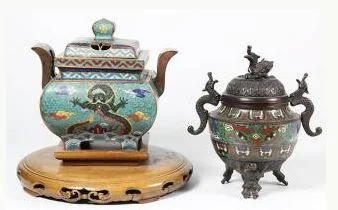 Censers, also known as incense burners, have been used for thousands of years in religious ceremonies and as a way to scent the air in homes and public spaces. They come in a wide variety of shapes, sizes, and materials, and are highly sought after by collectors around the world. In this article, we will focus on Asian censers, their history, types, and significance.
Censers, also known as incense burners, have been used for thousands of years in religious ceremonies and as a way to scent the air in homes and public spaces. They come in a wide variety of shapes, sizes, and materials, and are highly sought after by collectors around the world. In this article, we will focus on Asian censers, their history, types, and significance.
History of Asian Censers
Censers have been used in Asia for thousands of years, with the earliest examples dating back to the Shang Dynasty in China (16th-11th centuries BCE). In China, censers were often used in religious and spiritual ceremonies, and were made from a variety of materials, including bronze, jade, and porcelain.
In Japan, censers were an important part of Buddhist and Shinto rituals, and were often made from pottery, bronze, or lacquer. Korean censers were often made from brass or bronze, and were used in Confucian and Buddhist ceremonies.
Types of Asian Censers
There are many different types of Asian censers, each with their own unique features and uses. Here are some of the most common types:
- Bronze Censers: Bronze censers are some of the most sought-after Asian censers among collectors. They were often made during the Ming (1368-1644) and Qing (1644-1912) dynasties in China, and feature intricate designs and engravings. Bronze censers were also made in Japan and Korea, and were often used in religious ceremonies.
- Jade Censers: Jade censers are another popular type of Asian censer. They were often made during the Qing dynasty in China, and were highly prized for their beauty and durability. Jade censers were often used in religious and spiritual ceremonies, and were believed to bring good luck and prosperity to their owners.
- Porcelain Censers: Porcelain censers were popular during the Ming and Qing dynasties in China, and were often decorated with intricate patterns and designs. They were used in both religious and secular contexts, and were highly prized for their beauty and delicacy.
- Lacquer Censers: Lacquer censers were popular in Japan and were often used in Buddhist ceremonies. They were made by applying multiple layers of lacquer to a wooden base, and were often decorated with gold leaf or mother-of-pearl.
- Buddhist Censers: Buddhist censers were used in religious ceremonies in many Asian countries, including China, Japan, and Korea. They were often made from bronze, brass, or iron, and featured intricate designs and symbols that were important in Buddhist teachings.
Significance of Asian Censers
Asian censers are highly valued by collectors and enthusiasts around the world, not only for their beauty but also for their historical and cultural significance. In China, censers were often used in religious and spiritual ceremonies, and were believed to ward off evil spirits and bring good luck to their owners. In Japan, censers were an important part of Buddhist and Shinto rituals, and were believed to purify the air and create a peaceful atmosphere.
Today, antique and collectible Asian censers are highly sought after by collectors and enthusiasts. They are often displayed in museums and private collections, and can fetch high prices at auction houses.
One reason for the popularity of Asian censers is their intricate craftsmanship. Many censers feature elaborate designs, intricate patterns, and detailed engravings, making them works of art in their own right. The skill and artistry of the craftsmen who made these censers is highly respected, and many collectors prize them for their beauty and aesthetic appeal.
Another reason for the popularity of Asian censers is their historical significance. Many censers were made during important periods in Asian history, and can provide insight into the customs, beliefs, and traditions of the people who made and used them. They can also provide a window into the social and economic structures of the time, as well as the technological advancements of the period.
For collectors, the value of Asian censers can vary greatly depending on a number of factors, including their age, rarity, condition, and historical significance. Collectors often look for censers that are in good condition, with minimal wear and tear, and that have not been heavily restored or repaired. They also look for censers that have a clear provenance, or history of ownership, which can add to their value and authenticity.
Collecting Asian Censers
Collecting antique and collectible Asian censers can be a rewarding and fascinating hobby. However, it is important to approach it with care and diligence. Here are some tips for collectors:
- Research: Before buying a censer, do your research. Learn about the different types of censers, their history, and their significance. Look for reputable dealers and auction houses, and ask for provenance information and certificates of authenticity.
- Condition: Condition is important when it comes to censers. Look for censers that are in good condition, with minimal wear and tear, and that have not been heavily restored or repaired. Be wary of censers that have been over-cleaned or repainted, as this can affect their value and authenticity.
- Investment: Collecting antique and collectible censers can be a good investment, but it is important to approach it with caution. While some censers can fetch high prices at auction, others may not appreciate in value as much as you might expect. Be prepared to hold onto your censers for a while, and don't expect to make a quick profit.
- Display: If you're a collector, you'll want to display your censers in a way that showcases their beauty and craftsmanship. Consider investing in a display case or stand, and think about lighting and placement. Make sure to handle your censers with care, and avoid exposing them to direct sunlight or extreme temperatures.
Conclusion
Antique and collectible censers are fascinating objects that provide insight into the history and culture of Asia. From bronze and jade censers in China to lacquer censers in Japan, these objects are highly prized by collectors and enthusiasts around the world. Whether you're a seasoned collector or a newcomer to the hobby, collecting Asian censers can be a rewarding and fulfilling pursuit. By doing your research, paying attention to condition, and displaying your censers with care, you can enjoy these beautiful and historically significant objects for years to come.
Unlock the true value of your collection with our comprehensive research guides from identifying makers' marks to appraising all kinds of antiques and collectibles, including items featured in this article.
Our up-to-date information will give you an accurate understanding of your items' worth. Don't miss out on this valuable resource - visit our research tools today!
In addition to some examples shown below on this page, you can also search our price guide for your own treasures.
Examples of related items from our Price Guides
-
 CHINESE LONGQUAN CELADON SHALLOW BOWL, T
[more like this]
CHINESE LONGQUAN CELADON SHALLOW BOWL, T
[more like this]
-
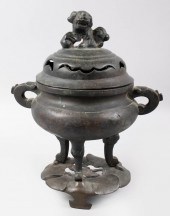 CHINESE BRONZE COVERED TRIPOD CENSER WIT
[more like this]
CHINESE BRONZE COVERED TRIPOD CENSER WIT
[more like this]
-
 PAIR OF CHINESE CELADON GUAN WARE PORCEL
[more like this]
PAIR OF CHINESE CELADON GUAN WARE PORCEL
[more like this]
-
 Chinese quartz censer, jadeite censer, a
[more like this]
Chinese quartz censer, jadeite censer, a
[more like this]
-
 CHINESE BLUE & WHITE JAR AND CENSER, 18/
[more like this]
CHINESE BLUE & WHITE JAR AND CENSER, 18/
[more like this]
-
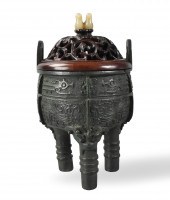 CHINESE ARCHAISTIC BRONZE TRIPOD CENSER,
[more like this]
CHINESE ARCHAISTIC BRONZE TRIPOD CENSER,
[more like this]
-
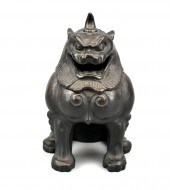 JAPANESE BRONZE COVERED LION CENSER ,MEI
[more like this]
JAPANESE BRONZE COVERED LION CENSER ,MEI
[more like this]
-
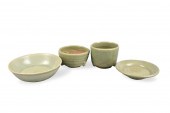 4 CHINESE LONGQUAN CELADON DISH & CENSER
[more like this]
4 CHINESE LONGQUAN CELADON DISH & CENSER
[more like this]
-
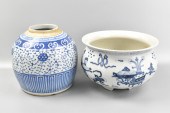 CHINESE BLUE & WHITE JAR AND CENSER, 18/
[more like this]
CHINESE BLUE & WHITE JAR AND CENSER, 18/
[more like this]
-
 JAPANESE BRONZE CENSER,MEIJI PERIOD A Ja
[more like this]
JAPANESE BRONZE CENSER,MEIJI PERIOD A Ja
[more like this]
-
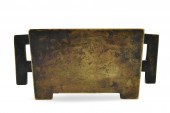 CHINESE BRONZE RECTANGULAR CENSER, 17/18
[more like this]
CHINESE BRONZE RECTANGULAR CENSER, 17/18
[more like this]
-
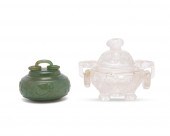 CHINESE CARVED CRYSTAL DIMINUTIVE COVERE
[more like this]
CHINESE CARVED CRYSTAL DIMINUTIVE COVERE
[more like this]
There are many more auction results available to our members...





